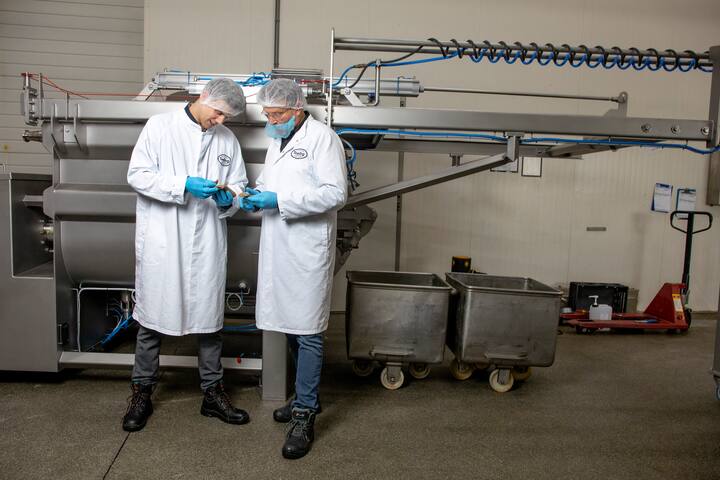
Leading in Q-DNA
Q-DNA
Controlling and monitoring Food Safety Culture (FSC) is crucial for food companies. Q-DNA — an innovative project developed in collaboration with Ghent University and Flanders’ FOOD — elevates food safety management within the industry. With Q-DNA, FSC can be measured and made tangible in a concrete and scientifically validated manner. These insights form the basis for targeted improvements aimed at strengthening and optimising the culture around food safety.
The outcome is a robust and cohesive Food Safety Culture that is embraced across all levels of the organisation, from senior leadership to shop floor employees.
Within Q-DNA, we distinguish three steps:
Research
Data integration en GAP analysis
Improvement strategies
Research
The process begins with a thorough investigation. We assess the current state of Food Safety Culture within an organisation on both organisational and individual levels. This is achieved through scientifically validated questionnaires, on-site data collection, and in-depth interviews with management. It is essential that all tiers of the organisation are actively involved throughout this process.
Based on the answers obtained (to which we assign a numerical value), we obtain a general overview of how Food Safety Culture is integrated throughout the organisation. These insights allow us to identify where improvements are needed.
Data integration and GAP analysis
The second phase focuses on integrating the collected data into a structured GAP analysis. Building on the insights gained during the initial assessment, we gain a detailed understanding of the current state of the organisation’s Food Safety Culture. This allows us to identify specific areas with potential for improvement.
Through the GAP analysis, we contrast the existing situation with the desired future state. This approach offers clarity on the necessary steps to achieve the targeted maturity level of Food Safety Culture.
Improvement strategies
This brings us to the final phase: determining and implementing improvement strategies. During this phase, we determine exactly which steps will be taken to improve the Food Safety Culture within the organisation. As explained earlier, this depends on the investigation (potential pain points) and the GAP analysis (where we compare the current situation with the desired situation). The success of these strategies depends on the support of the entire organisation. From management to employees, everyone is responsible for implementing the necessary improvements and translating the strategies into real improvements.
Naturally, this cycle can be repeated after a defined period to evaluate whether improvements in the Food Safety Culture have taken hold and whether the implemented strategies have been effectively embedded.
These services might also be of interest to you

Guiding start-ups

Open courses

GAP analysis
Leading companies in this service

Normec QA
Antwerpen Belgium
Do you want to create a safe and healthy working and living environment?
FAQ
Frequently asked questions
Q-DNA is a scientifically validated approach developed with Ghent University and Flanders’ FOOD to measure and strengthen your food safety culture (FSC). It provides insights to support long-term cultural improvements across all levels of your business.
Q-DNA follows a three-step process: research (validated surveys and interviews), data integration with a GAP analysis, and the creation of tailored improvement strategies, giving you a clear understanding of current and target FSC maturity.
Q-DNA gives you measurable insights into how food safety is truly embedded in your organisation. You’ll receive actionable data, clear improvement areas and a focused roadmap for cultural enhancement.